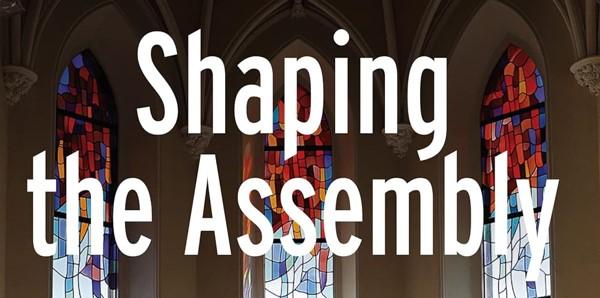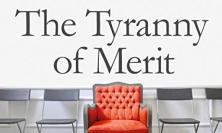This collection of essays examines the nature and layout of a variety of liturgical spaces and churches, from the UK and Ireland to the United States and Australia, and explores how these have been formed. Ecumenical in its outlook, it is not just Catholic spaces that are visited, but those of a number of different Christian denominations.
Beyond thought-provoking examples that will be of interest to liturgists, architects and historians, the volume acts as a useful guide as to how we might interpret or form sacred spaces, and also how we might pray ‘into’ them rather than just ‘in’ them.
There’s a lot of ‘difference’ in this collection – difference between traditions and spiritualties. Differences of use. Differences in the theology of the eucharist.
Like most of us, I am guilty of treating church spaces in a fairly functional way, dashing in for Mass and then leaving promptly. We often only really notice the churches we worship in when we are thrown out of our normal routine – a church visited during a holiday, or a parish local to our workplace when we belatedly realise that it’s a holy day of obligation.
The essays prove fruitful in pointing out how we might notice these spaces, and how perhaps we might use them as a route into prayer in their own right – not just places where the Mass is celebrated, but places where we become conscious of the architecture, artworks and other people who surround us.
Some concepts will be somewhat alien to a lot of readers. Thomas Whelan talks about ‘liturgy consultants’ in the USA, who work with communities to shape designs for the buildings in which they worship. Very few of us in the UK live in contexts where a new church or chapel might be commissioned, but we are surrounded by examples of the results of communities who preceded us being faced with exactly this challenge. How should a church look? Who is the church for?
The historicity of our Christian faith is very important, and this extends to the architectural styles employed by architects through the nineteenth and into the twentieth centuries. The imagination of the architect, in dreaming what a Catholic church should look like hundreds of years on from the Reformation once it was again legal for the Mass to be celebrated, reached to a variety of styles.
Encountering the Byzantine grandeur of Westminster Cathedral, it’s difficult to imagine that the architect, John Francis Bentley, initially submitted designs for a gothic building. However, it was decided that the new Catholic cathedral needed to look distinct from Westminster Abbey, a short distance down the road, and Bentley was instructed to redesign the cathedral in a style redolent of the Hagia Sophia in Istanbul.
Entertainingly, many years later, the UK Independence Party (South Thanet branch), irked by a BBC voting exercise conducted outside Westminster Cathedral, tweeted that the perfect place for such a poll was ‘in front of a mosque’ – much to the amusement of the Catholic community. This highlights an interesting point about the architecture – the choice of architectural style for a worship space is intentional, and guides the visitor on a journey to understanding the vision for the space (even if, on occasion, the vision is misinterpreted).
Some of the articles point to the reordering, and now re-reordering of churches that we are seeing. Richard Vosko examines the location of liturgical furnishings, and Paul Bradshaw discusses the placement of liturgical objects such as the altar and tabernacle, a theme touched on a number of times in this volume. Interestingly, in many places, we are seeing a return to traditional liturgical arrangements, which is picked up by Vosko. A recent example of this can be seen in the restoration work that has taken place at Shrewsbury Cathedral, where a modern reordering has been reversed to align more closely with the intentions of the architect, E.W. Pugin.
More broadly, many of the essays in this collection draw our minds to our consciousness of our church spaces, and how we are and behave in them. What do these spaces mean? Outside of the liturgy, what can we gain from the contemplation of these spaces – whether from the sound in them, the play of light, or the presence of the artworks inside them? What is the devotional rhythm of these spaces – can we turn observation of this into prayer? How can we be places of welcome for everyone?
Mention liturgical dance in any Catholic social setting and you are likely to get an eye roll or two, but Laura Hellsten’s piece describing the traditions of dance in Western liturgy raises a series of important points for reflection. What are the ways in which we interact with the spaces in the church? What do we bring of our folk or cultural traditions to the liturgy – to God?
Anne Dixon echoes these questions, describing the art of noticing or contemplating the space in which we find ourselves. As a guest at the liturgy of an Anglican Benedictine congregation of religious sisters in Kent, changing her perspective (owing to being sat in a side chapel) caused her to notice things differently. Margaret Daly-Denton's article also leads us into the contemplation of our places of worship, via the Benedictine ideal of hospitality. She talks us through the gradual assembly of the liturgy room at the Irish Institute of Pastoral Liturgy – the colour of the walls and the carpet, the placement of artworks and liturgical items, all mindful of the spirit of Christian hospitality.
All of the authors share something of their relationship with space, place and the sacred. Perhaps there is a lesson in these essays in encountering our church spaces consciously – noticing how we have formed these spaces, and how they form us – for worship, and as people and places of welcome.
Josephine Warren is Historic Churches Adviser at the Catholic Bishops’ Conference of England and Wales






